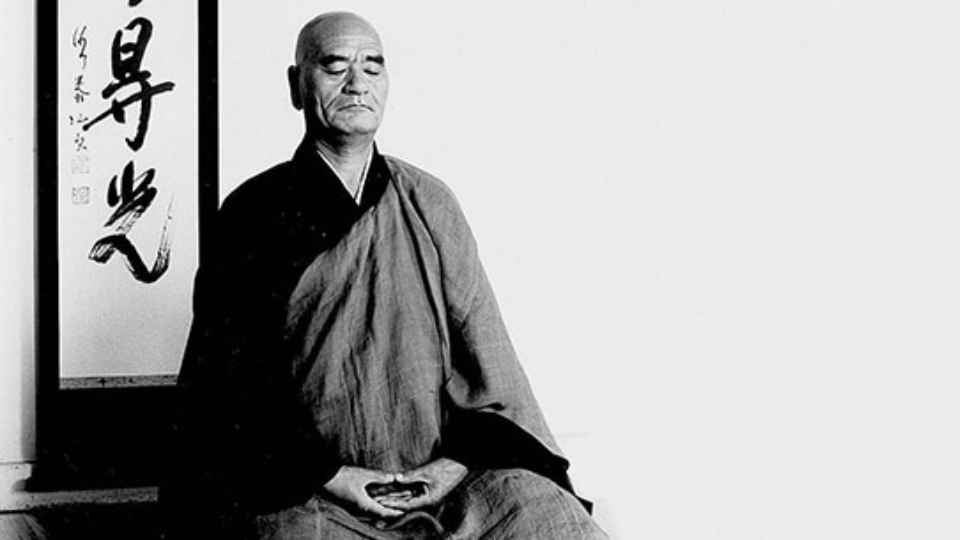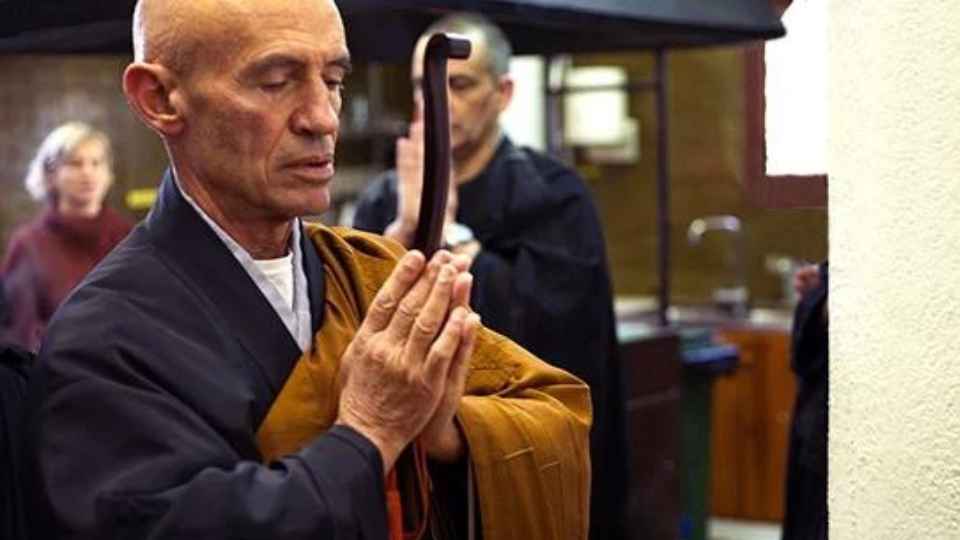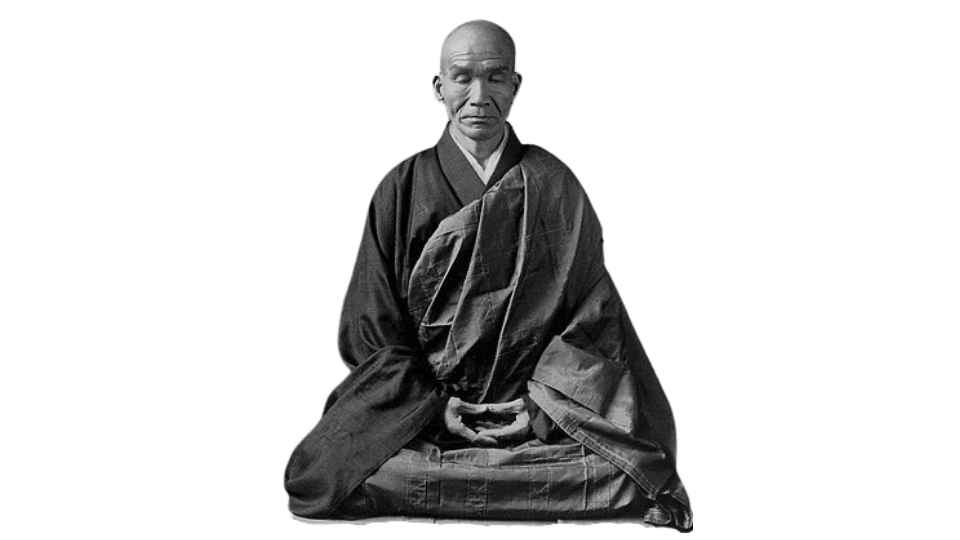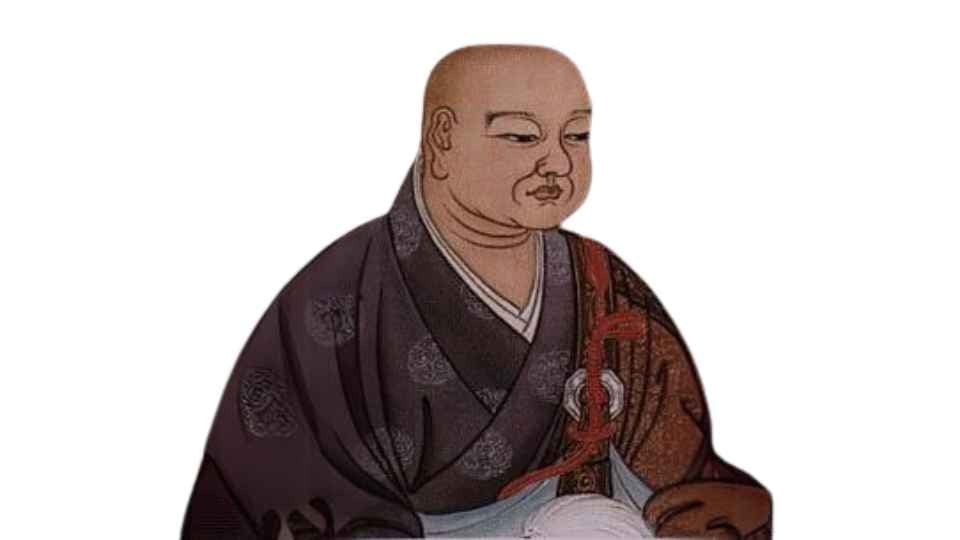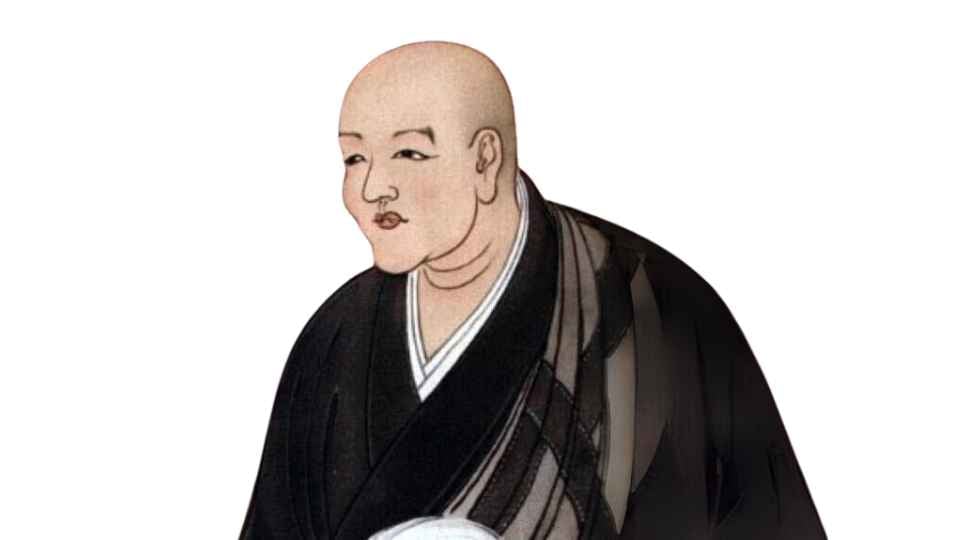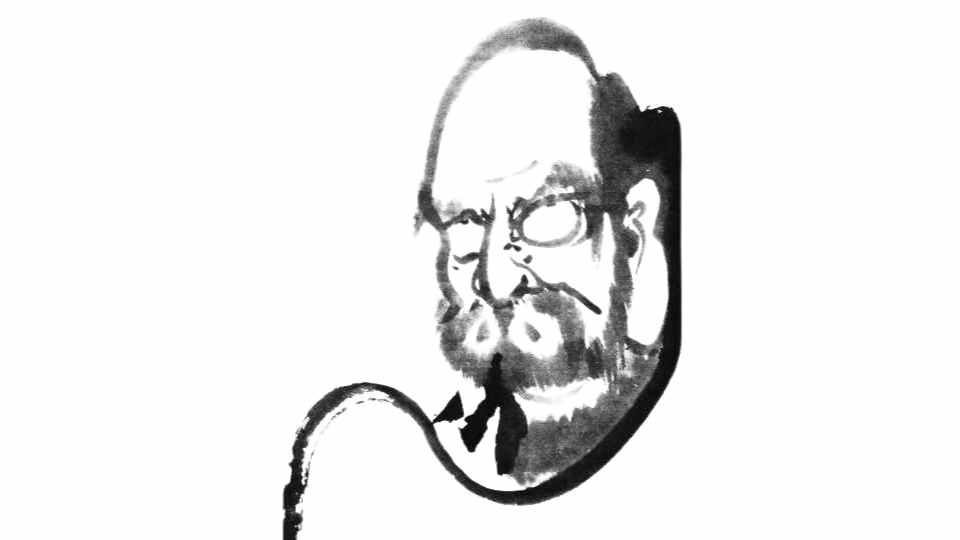Born in Saga in 1914, Taisen Deshimaru was a disciple of Master Kodo Sawaki, one of the most influential Zen masters in 20th-century Japan, known for emphasizing the importance of zazen practice and for opening the practice to laypeople. Unlike most Zen masters, Taisen Deshimaru continued to lead a secular life while following his master’s teachings. In 1965, shortly before Sawaki’s death, he received ordination as a monk from him.
Taisen Deshimaru was a disciple of Kodo Sawaki
After an encounter with Kodo Sawaki at the Soji-ji monastery, Deshimaru became his disciple and requested ordination as a monk. Sawaki responded, “It is not necessary to be a professional monk; they are all crazy! It is very rare to find one who is not ordinary. You must remain as a bodhisattva; I will give you ordination upon my death when you have matured. The path of a bodhisattva who remains in the world to help others is much more arduous than the fate of a monk who lives secluded in a monastery” (Blain, 2011).
Apparently, Deshimaru’s wife also intervened on several occasions, asking Kodo Sawaki not to ordain her husband, fearing he would abandon the family to follow his master. Sawaki reassured her, promising to wait until the final moments of his life, with her consent, to ordain Deshimaru. Due to this, Deshimaru did not receive the ordination he longed for until the end of Kodo Sawaki’s life.
Taisen Deshimaru monk ordination
In November 1965, gravely ill, Kodo Sawaki summoned Deshimaru to Antai-ji to finally ordain him as a monk. Deshimaru received the name Mokudo Taisen Deshimaru. Kojun Kishigami Osho, present at this event, recounts:
“I prepared the incense-scented bath for the ceremony before Taisen put on the ordination kolomo. Kodo Sawaki had retired as abbot of Antai-ji temple and resided on the first floor. At that time, Kodo Sawaki was so weakened that during the ceremony, he had to be replaced by Uchiyama, the Abbot of Antai-ji. The ceremony continued in the hallway next to the master’s room. He watched from his bed as Uchiyama performed the rest of the ordination. The monk’s kolomo and rakusu were handed to him by Kodo Sawaki” (Blain, 2011).

Go bring Zen to the West!
Shortly before his death, Master Sawaki called Taisen Deshimaru to his bedside: “I want you to be a true monk. Go bring Zen to the West. I don’t want you to stay here in Japan with all these professional monks who have lost the meaning of Zen. In India, during Bodhidharma’s time, Buddhism was in decline. Bodhidharma’s master ordered him to take the teachings to the East. In the same way, Buddhism in Japan is dying today. So you, my Dharma heir—and only you, who know the true teaching of Buddha—take it with you to the West so that Buddhism can flourish again” (Blain, 2011).
Then, Kodo Sawaki took his Zen notebooks from a drawer and handed them to Taisen. He also gave him his kesa and kyosaku as symbols of shiho, the Dharma transmission. Throughout his life, Deshimaru would regard these objects as true relics. Sawaki entrusted Kosho Uchiyama with Deshimaru’s ketsumyaku (lineage certificate), asking him to handle its registration with the Soto School administration. Unlike Taisen, Kosho Uchiyama was well-versed in the administration of the Soto-shu Shumucho. Unfortunately, the administrative process encountered some difficulties in completion (Blain, 2011).

sesshin in memory of Kodo Sawaki
In December 1965, “After burying his master’s ashes, Deshimaru remained in zazen for 49 days” (Bovay, M. 1999, p. 135). This means that Taisen Deshimaru participated in the 49-day sesshin in memory of Kodo Sawaki, led by Uchiyama Roshi at Antai-ji. Instead of the usual large-scale funeral services, Uchiyama Roshi decided to hold a commemorative sesshin for him, lasting 49 days. In this way, he emphasized Sawaki’s focus on zazen, which can never be replaced by rituals and ceremonies. The 49-day sesshin also marked the beginning of a new style of sesshin at Antai-ji (Antai-ji website).
Master Taisen Deshimaru in Europe
After arriving in France in 1967, Deshimaru began spreading the teachings of Soto Zen in Europe. In 1972, he founded the Paris Zen Dojo in Pernety, which became an important center for Zen practice under his guidance. This dojo was the first that Deshimaru established in Europe and played a crucial role in the expansion of Zen in the West.

Shiho recognition from Yamada Reirin
Taisen Deshimaru received the Shiho (the final Dharma transmission) from Yamada Reirin in 1975, after the death of his master Kodo Sawaki in 1965. Although Deshimaru had already received the ketsumyaku from Sawaki, it had not been registered with the Sotoshu. Therefore, it was Yamada Reirin, the abbot of Eihei-ji temple and an authority in the Soto Zen tradition, who formally completed this process with the Shiho, the definitive and official transmission within the Soto Zen school.
This recognition was important, as it allowed Deshimaru to be regarded as a genuine Zen master in Japan and abroad, giving him the legitimacy to expand Zen in Europe, particularly in France, where he had already begun his work of spreading Soto Zen.
Master Taisen Deshimaru in Barcelona
In 1981, Taisen Deshimaru was invited by a group of Zen practitioners to lead a sesshin in Caldes de Montbui (Catalonia) and to bless the Barcelona Zen Dojo located on Montcada Street. During the retreat, he offered a teaching on Kannon, the Bodhisattva of compassion.
4o

Practice zazen eternally
During his 15 years in Europe, Taisen Deshimaru trained numerous disciples, and through his efforts, many Zen centers and practice locations were established. In 1970, he founded the AZI (Association Zen Internationale), and in 1979, the Gendronnière Temple.
An illustration of his legacy is the Genealogical Tree of the Great Sangha of Taisen Deshimaru, created in 2017 to celebrate the 50th anniversary of his arrival in Europe.
He passed away in 1982, after having generously sown the seeds of Zen Buddhism in Europe. Before departing for Japan to spend his final days, Taisen Deshimaru told his disciples: “Practice zazen eternally!”
References
BLAIN, D., 2011. Sensei: Taisen Deshimaru, maître zen. Paris: Albin Michel. ISBN 2226221522.
DESHIMARU, T. y BARENYS, N., 2010. Autobiografia d’un monjo zen. Barcelona: Publicacions de l’Abadia de Montserrat. ISBN 9788498832785.
DESHIMARU, T., 2003. La Pràctica del zen. Barcelona: Publicacions de l’Abadia de Montserrat. vol. 300. ISBN 8484154564.
BOVAY,M. 1999. “Zen”. Editorial Kairos. Barcelona. P135
ANTAIJI web oficial, antaiji.org
Roland Yuno Rech, Zen Master
Roland Yuno Rech, born in 1944, graduated from the Paris Institute of Political Studies and…
Taisen Deshimaru. The Bodhidharma of modern times
Born in Saga in 1914, Taisen Deshimaru was a disciple of Master Kodo Sawaki, one…
Kodo Sawaki. Homeless Kodo
Kodo Sawaki (1880-1965) was an influential Japanese Zen master, known for revitalizing the practice of…
Keizan Jokin. 700th anniversary homage
In the history of Zen, there have been especially brilliant masters. One of them is…
Eihei Dogen. Author of Shobogenzo
Zen Master Dogen (1200-1253) is one of the most influential figures in Japanese Buddhism, particularly…
Bodhidharma. Founder of the Zen school
Bodhidharma, often considered the 28th Indian master of Zen and the 1st Chinese master, is…

